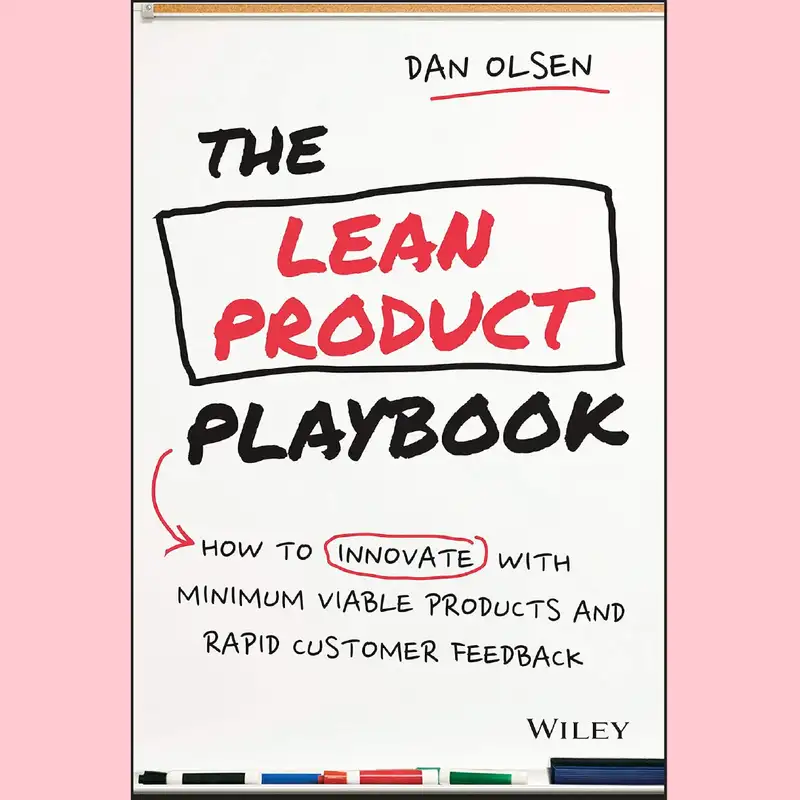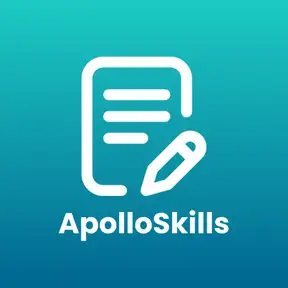The Lean Product Playbook by Dan Olsen
The Lean Product Playbook by Dan Olsen is a practical guide for startups and entrepreneurs. It offers a structured approach to achieving product-market fit through iterative development, customer insights, and the Lean Product Process.
Free Course on The Lean Product Playbook https://www.apolloskills.com/courses/lean_product_playbook
Book Summary
Free Course on The Lean Product Playbook https://www.apolloskills.com/courses/lean_product_playbook
Book Summary
The Lean Product Playbook by Dan Olsen is a comprehensive guide for entrepreneurs, product managers, and innovators looking to build successful products using lean principles. Olsen combines practical advice with actionable frameworks to help teams develop products that meet customer needs. The book emphasizes the importance of iterative development, customer feedback, and creating minimum viable products (MVPs) to achieve product-market fit efficiently and effectively.
The Lean Product Process
At the heart of The Lean Product Playbook is the Lean Product Process, a step-by-step framework designed to help teams systematically develop products that resonate with their target audience. The process is iterative and customer-focused, ensuring that each step is validated through real-world feedback. The Lean Product Process consists of six key steps:
- Determine Your Target Customer: Olsen emphasizes defining a specific target customer segment. Understanding who your customers are is crucial for tailoring your product to meet their needs effectively. Olsen advises creating detailed customer personas to guide product decisions and prioritize features.
- Identify Underserved Customer Needs: Once the target customer is defined, the next step is identifying their pain points and unmet needs. Olsen encourages teams to conduct customer interviews, surveys, and market research to uncover these needs, focusing on areas where current solutions fall short.
- Define Your Value Proposition: With a clear understanding of customer needs, teams can define a value proposition that outlines how their product will better solve those needs than existing alternatives. Olsen introduces the concept of the "value proposition pyramid," which helps teams articulate the primary and secondary benefits their product offers customers.
- Specify Your MVP Feature Set: Instead of building a fully featured product, Olsen advocates starting with a Minimum Viable Product (MVP). This simplified product version delivers the core value proposition. The MVP allows teams to test their assumptions and gather feedback with minimal investment. Olsen provides practical guidance on prioritizing features and avoiding the common trap of feature creep.
- Create and Test Your MVP: Once the MVP is defined, the next step is to build and test it with real customers. Olsen emphasizes the importance of rapid prototyping and iterative testing to validate the product’s value proposition. He also highlights various testing methods, such as usability testing, A/B testing, and customer interviews, to gather valuable feedback.
- Iterate and Improve: Based on the feedback from MVP testing, teams should iterate on their product, refining the feature set and improving the user experience. Olsen stresses the importance of continuous learning and adaptation, using customer insights to guide product development and move closer to achieving product-market fit.
Achieving Product-Market Fit
A central theme of the book is the pursuit of product-market fit—the alignment between the product and the target market's needs. Olsen argues that product-market fit is the most critical factor in a product’s success. He offers detailed advice on measuring and evaluating product-market fit, including customer satisfaction, retention rates, and net promoter scores (NPS).
Olsen also discusses the "Lean Startup" methodology popularized by Eric Ries, emphasizing the importance of building, measuring, and learning through iterative cycles. By focusing on customer feedback and making data-driven decisions, teams can minimize waste, reduce risk, and increase the likelihood of creating a product that customers love.
The Role of UX Design
Olsen highlights the crucial role of user experience (UX) design in creating products that delight customers. He provides practical tips on designing intuitive and user-friendly interfaces, emphasizing the importance of understanding user behavior and designing with empathy. Olsen advocates for an iterative design process, where prototypes are tested and refined based on user feedback.
The book also introduces tools like wireframes, mockups, and usability testing to help teams create effective UX designs. Olsen’s approach is practical and actionable, providing readers with the tools they need to build products that meet functional needs and offer a seamless and enjoyable user experience.
Practical Frameworks and Real-World Examples
The Lean Product Playbook is filled with practical frameworks, templates, and real-world examples that make the concepts easy to understand and apply. Olsen provides detailed case studies of successful products, illustrating how the Lean Product Process has been used to develop and refine products in various industries. These examples offer valuable insights into the challenges and successes of implementing lean principles in real-world settings.
Olsen’s writing is clear and straightforward, making complex concepts accessible to readers with varying experience levels in product management and entrepreneurship. The book’s focus on actionable advice ensures that readers can immediately apply the principles and techniques to their product development efforts.
A Relatable and Actionable Guide
The Lean Product Playbook is a practical and relatable guide for anyone involved in product development, from startup founders to seasoned product managers. Olsen’s emphasis on customer-centricity, iterative development, and continuous learning makes the book valuable for teams looking to build products that meet market needs.
The book’s inclusive and forward-thinking approach ensures that readers from all backgrounds can benefit from the lessons and strategies presented. By following the Lean Product Process, teams can increase their chances of success by systematically validating their ideas and refining their products based on honest customer feedback.
Conclusion
The Lean Product Playbook by Dan Olsen is an essential resource for anyone looking to build successful products using lean principles. The book’s step-by-step framework, practical advice, and real-world examples provide a clear roadmap for developing products that achieve product-market fit. Olsen’s focus on customer feedback, iterative development, and actionable insights makes this book a must-read for product managers, entrepreneurs, and anyone involved in innovation.
By applying the strategies outlined in The Lean Product Playbook, teams can minimize risk, reduce waste, and create products that resonate with their target audience. This book is a comprehensive and actionable guide to mastering the art of lean product development, offering valuable tools and insights to help you turn your product ideas into successful market offerings.
Free Course on The Lean Product Playbook https://www.apolloskills.com/courses/lean_product_playbook
★ Support this podcast on Patreon ★
Free Course on The Lean Product Playbook https://www.apolloskills.com/courses/lean_product_playbook

